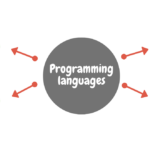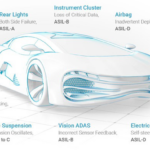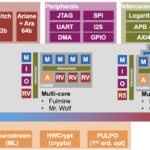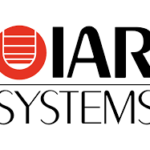 Clarinox Technologies announced the addition of ClariFi Insight, a non-intrusive trace, and debugger that enables customers to debug their systems that including ClarinoxWiFi or ClarinoxBlue. ClariFi Insight traces the behavior of a system, enabling developers to more easily identify and correct errant application behavior by capturing high-speed events. This has been successfully tested at speeds of 100mbit/s UDP over Wi-Fi.
Clarinox Technologies announced the addition of ClariFi Insight, a non-intrusive trace, and debugger that enables customers to debug their systems that including ClarinoxWiFi or ClarinoxBlue. ClariFi Insight traces the behavior of a system, enabling developers to more easily identify and correct errant application behavior by capturing high-speed events. This has been successfully tested at speeds of 100mbit/s UDP over Wi-Fi.
Unlike many debug tools, ClariFi Insight is non-intrusive and does not interfere with the normal behavior and functionality of embedded Wi-Fi and Bluetooth applications. Such interference is particularly problematic with high-speed applications as the typical trace debug process creates interruptions that interfere with system sequencing and performance. The small footprint of ClariFi Insight ensures that developers can trace and debug high-speed events without slowing the software application and impacting normal system behavior.
As the high-speed connectivity of embedded systems increases, so has the challenge of debugging system behavior. The trend toward cloud connectivity, remote management, and increased system integration requires disparate systems to now work together. Firmware from multiple silicon vendors, real-time operating systems (RTOS)/operating systems (OS), and TCP/IP stacks combine with a plethora of drivers such as USB, UART, and SDIO, as well as the connectivity stacks all operating under the customer’s own embedded application layer. ClariFi Insight provides information about how the various parts function and perform as they communicate and pass data to the ClarinoxWiFi and ClarinoxBlue components.
ClariFi Insight uses a small memory buffer at a set memory location to trace functionality. A buffer—as small as a few kilobytes—is sufficient to enable a developer to debug a system crash or capture what is taking place on the target. When coupled with the option of defining custom events with short or long packets of data, these insights give engineers the visibility needed to trace whether one part of the system is attempting to communicate and/or pass data incorrectly or at the wrong time—typical factors that result in aberrant system behavior.
Once ClariFi Insight records the predefined events, the data can be read into ClariFi, where the full set of tools, including the Lua scripting capability, can search and fully analyze the information. The ClariFi Insight information can then be used with or without these other ClariFi debug, protocol analysis, and automated testing features. ClariFi Insight performance measurements could, for example, be taken during an automated testing session driven by the ClariFi scripting engine. Various data formats are supported for reading the data by ClariFi; currently, raw binary, Intel hex format, or Motorola S format is supported.





Leave a Reply